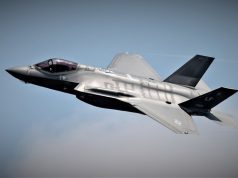
The US Air Force has decided to make the Tyndall Air Force Base in Florida the official home of three new squadrons of the F-35A Lightning II, with the first aircraft scheduled to arrive in 2023.
The service made the decision despite the fact that the base was heavily damaged by Hurricane Michael in 2018.
In fact, the damage from the hurricane prompted the base’s redesign to become the Department of Defense’s first “Installation of the Future.” This has allowed the service to rebuild the base to accommodate the unique needs of the F-35A.
Air Force officials said they selected Tyndall AFB based on numerous attributes, including infrastructure capability, quality of life for Airmen, and airspace. The selection process included a thorough environmental impact analysis, in accordance with the National Environmental Policy Act.
Tyndall AFB is also home to F-22 Raptors, which have relocated temporarily to allow repair works at Tyndall to continue following the hurricane.
“Adding F-35 squadrons at Tyndall (AFB) ensures Airmen will continue to have a strategic advantage as the 325th Fighter Wing enhances fighter training and combat readiness,” said Col. Greg Moseley, 325th FW commander.
The F-35s will be delivered to three fighter squadrons in multiple phases, with the first aircraft planned to arrive in September 2023. Each of the squadrons will have 24 Joint Strike Fighters assigned; totaling 72 aircraft assigned to Tyndall AFB’s 325th FW once full mission capability is achieved.
The installation adjoins the Gulf Range Complex, comprising 130,000 square miles of training airspace over the Gulf of Mexico, and is one of the few ranges in the U.S. capable of supporting large-scale air combat training. Direct access to this range is essential for fifth-generation fighter readiness and for live-fire testing and training.
“The airspace surrounding Tyndall (AFB) is a national treasure,” Moseley said. “The type of training conducted here integrates the DoD’s most advanced aircraft and builds a dynamic force.”


























